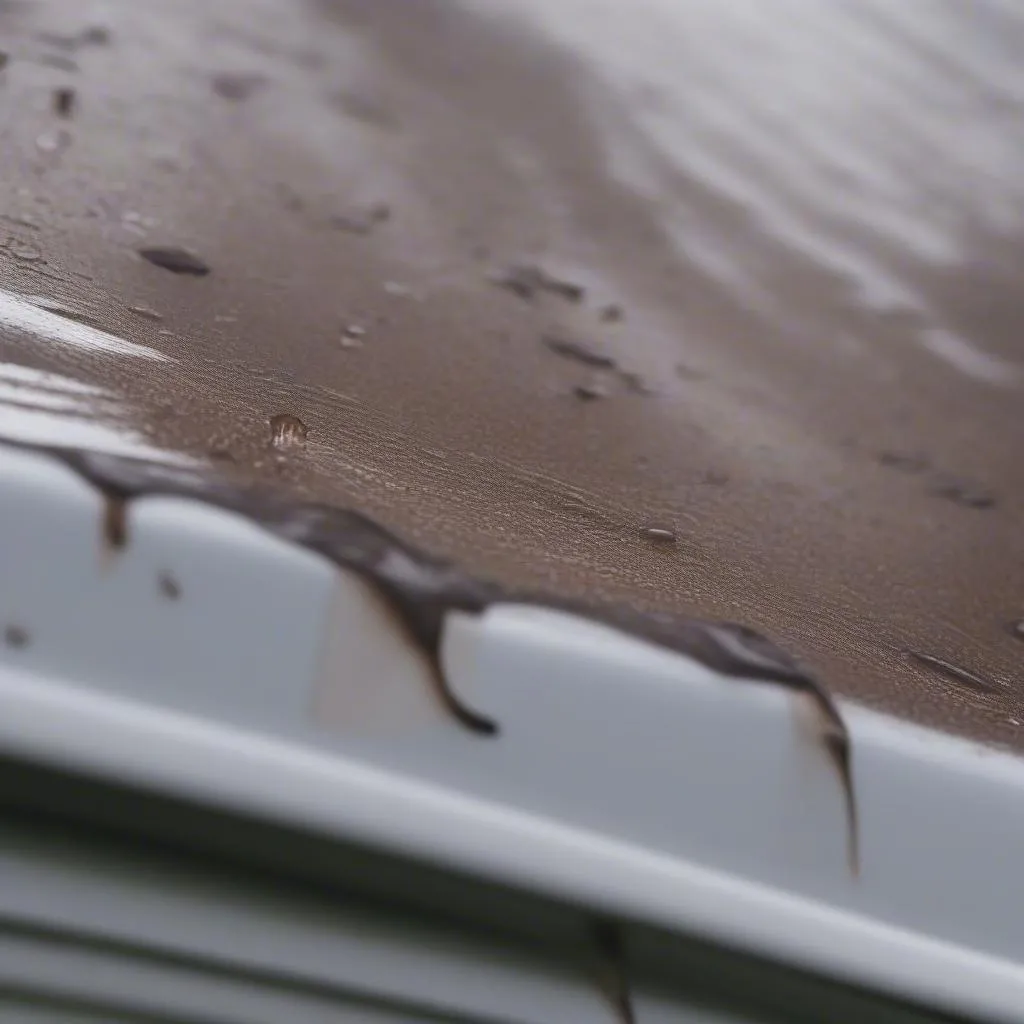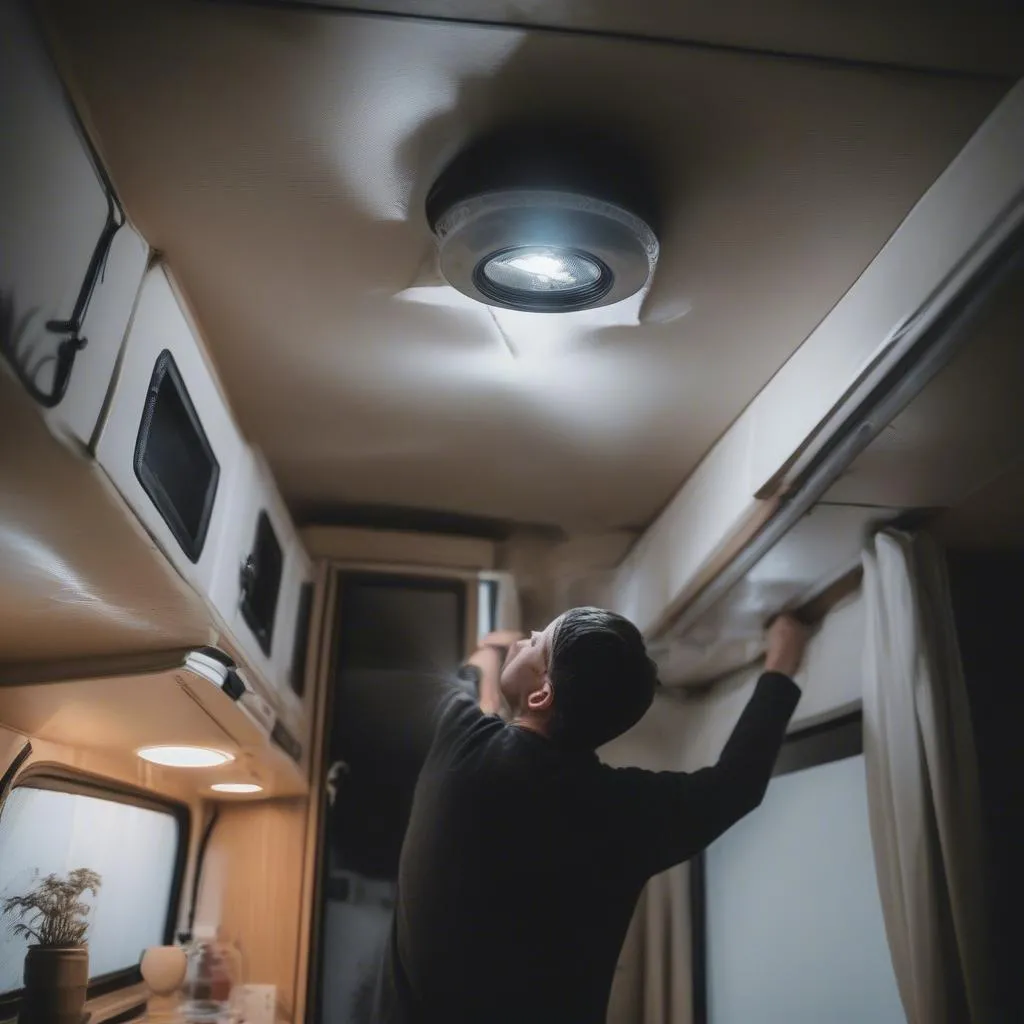Remember that time you were all set for a relaxing getaway in your travel trailer, only to find water dripping on your head? Yeah, a leaky roof can really put a damper on your travel plans. But don’t worry, every problem has a solution! Fixing a travel trailer roof might seem daunting, but with a little guidance and some elbow grease, it’s a manageable DIY project.
Whether you’re parked near the breathtaking Yosemite National Park or enjoying the serene beaches of Malibu, a leaky roof can throw a wrench in your travel plans. This guide will walk you through everything you need to know about fixing a travel trailer roof, from identifying the problem to ensuring a watertight seal.
Identifying the Culprit: Where’s the Leak?
Before you grab your toolbox, you need to pinpoint the source of the leak. Water can be sneaky, so don’t assume you know the source just by looking at the interior damage.
- Check the Roof: Look for cracks, holes, or gaps around vents, antennas, and air conditioners.
- Inspect the Seals: Examine the sealant around vents, windows, and seams. Over time, sealant can crack, shrink, or peel away, creating an entry point for water.
- Don’t Forget the Sides: Water can enter through loose trim, damaged siding, or openings around lights and fixtures.
Expert Tip: “Always inspect your travel trailer roof at least twice a year, especially after a hailstorm or heavy snowfall,” advises John Miller, author of “The Complete RV Repair Guide.”
Gearing Up: Tools and Materials
Once you’ve found the culprit, gather your tools and materials:
- Cleaning Supplies: Brush, broom, soap, water, and a cleaner specifically designed for RV roofs.
- Repair Materials: Depending on the damage, you’ll need sealant (self-leveling or non-sag), roofing membrane tape, roof coating, or even replacement parts for vents or antennas.
- Tools: Putty knife, caulking gun, utility knife, measuring tape, safety glasses, and gloves.
Time to Fix It: Repairing the Roof
Now comes the action! Here’s a step-by-step guide to fixing common travel trailer roof problems:
1. Sealing Cracks and Gaps:
- Clean the area: Thoroughly clean the area around the crack or gap with soap and water, ensuring it’s dry before proceeding.
- Apply Sealant: Using a caulking gun, apply a generous bead of sealant, pressing it firmly into the crack. For larger gaps, consider using a backing rod to support the sealant.
- Smooth and Level: Use a putty knife to smooth the sealant and create a watertight seal.
2. Repairing Roof Membrane Tears:
- Clean and Dry: Ensure the area around the tear is clean and dry.
- Apply Roof Tape: Cut a piece of roof membrane tape slightly larger than the tear and apply it firmly, ensuring good adhesion.
- Seal the Edges: Seal the edges of the tape with sealant to prevent water from seeping underneath.
3. Re-coating the Roof:
- Clean the Roof: Thoroughly clean the entire roof surface with a cleaner designed for RV roofs. Rinse well and allow it to dry completely.
- Apply Roof Coating: Follow the manufacturer’s instructions for applying the roof coating. Use a brush, roller, or sprayer, depending on the type of coating.
- Apply Multiple Coats: Most roof coatings require multiple coats. Allow each coat to dry completely before applying the next.
Expert Tip: “Invest in a high-quality, UV-resistant sealant and roof coating to prolong the life of your travel trailer roof,” recommends Sarah Johnson, a seasoned RV enthusiast and blogger at “Roaming with Sarah.”
 RV Roof Leak
RV Roof Leak
Preventing Future Leaks: Maintenance is Key
Just like a regular visit to the mechanic keeps your car running smoothly, regular maintenance is crucial for preventing leaks in your travel trailer roof.
- Regular Inspections: Inspect your roof at least twice a year, looking for any signs of damage or wear and tear.
- Sealant Check: Inspect the sealant around vents, windows, and seams, reapplying or replacing it as needed.
- Clean Your Roof: Regularly clean your roof to remove dirt, debris, and mildew, which can damage the roof membrane over time.
- Mind the Trees: Avoid parking under trees, as falling branches and sap can damage the roof.
 RV Roof Maintenance
RV Roof Maintenance